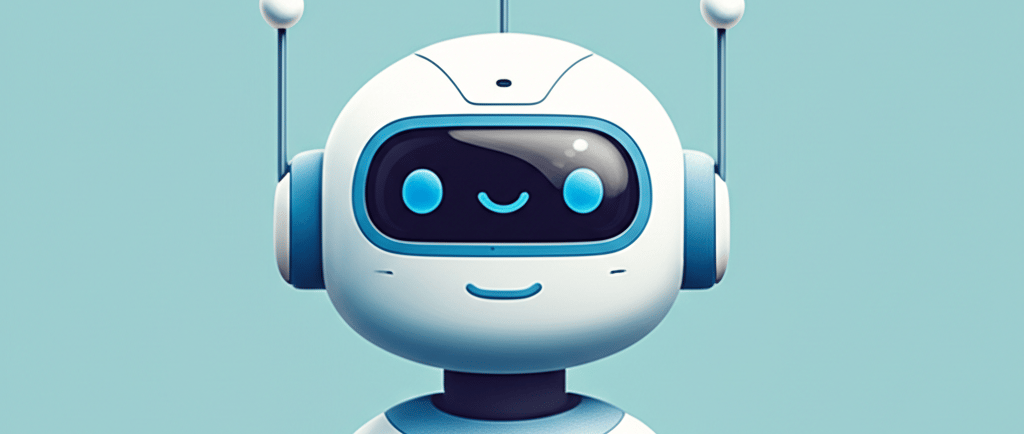AI and Chatbots Revolutionizing Customer Service
Discover how artificial intelligence and chatbots are transforming customer service. Learn to choose, develop, and integrate chatbots for efficient, personalized, and 24/7 support.
10/4/20257 min read


Artificial Intelligence and Chatbots: The Revolution in Customer Service
Artificial intelligence has fundamentally changed how businesses connect with their customers. Among the most impactful technologies in this landscape, chatbots stand out by combining automation, efficiency, and personalization in customer service. They enable companies of all sizes to offer quick support, available around the clock, while simultaneously freeing human teams to tackle more complex issues.
What makes chatbots particularly fascinating is how far they've come. They've evolved from simple automated responses into sophisticated systems capable of understanding natural language, analyzing complex contexts, and delivering personalized solutions. Thanks to machine learning and natural language processing, these digital assistants learn continuously from each interaction, ensuring an increasingly smooth and satisfying customer experience.
Think about the last time you visited a website and a chat window popped up asking if you needed help. Chances are, you were interacting with a chatbot. These virtual assistants have become so advanced that sometimes it's hard to tell whether you're talking to a bot or a real person. That's the power of modern AI technology working behind the scenes.
The Real Benefits of Chatbots in Customer Service
The advantages of using chatbots in customer service go far beyond simple automation. They directly impact user satisfaction and operational efficiency in ways that traditional support channels simply can't match. Chatbots respond instantly to common questions, remain available at any time of day or night, and can handle multiple customers simultaneously. This powerful combination reduces wait times, increases team productivity, and significantly improves the perception of a company's responsiveness.
But here's where it gets even more interesting. Modern chatbots don't just provide generic responses. They personalize interactions by adjusting their answers based on customer history and preferences. This attention to detail creates a sense of closeness and trust that was previously only possible through human interaction. When a chatbot remembers your previous purchases or preferences, it feels like the company truly knows you and cares about your experience.
Major brands have already recognized this potential. Companies like Sephora and H&M use chatbots extensively to optimize their customer service, demonstrating how this technology can transform the consumer experience while simultaneously reducing operational costs. Sephora's chatbot, for instance, can help customers find the perfect lipstick shade or recommend skincare products based on their specific needs. H&M's virtual assistant helps shoppers put together complete outfits and find items in their size. These aren't just automated response systems; they're sophisticated shopping companions.
The financial impact is equally impressive. By handling routine inquiries automatically, chatbots allow companies to serve more customers with fewer resources. Human agents can focus their expertise on complex situations that truly require emotional intelligence and creative problem-solving. It's a win-win situation: customers get faster responses, and companies operate more efficiently.
Choosing the Right Chatbot Platform
Selecting the right chatbot platform is crucial for achieving efficient results. This decision can make the difference between a chatbot that delights customers and one that frustrates them. Intuitive tools allow teams to manage the bot without requiring advanced technical knowledge, which means your marketing or customer service team can make updates and improvements without constantly relying on developers.
Integration with existing systems is another critical factor. Your chatbot should work seamlessly with your CRM, marketing platforms, and other business tools. This centralization of information makes communication smoother and ensures that every department has access to the same customer data. Imagine a scenario where your chatbot collects information about a customer's issue, and when that customer is transferred to a human agent, all that context is immediately available. No need to repeat information, no frustration, just efficient service.
Support for multiple languages has become increasingly important in our globalized world. A chatbot that can switch between English, Spanish, Portuguese, and other languages allows companies to serve customers from different regions without hiring multilingual staff for every shift. This capability dramatically expands a company's reach and accessibility.
Platforms powered by artificial intelligence that learn from each interaction offer responses that are not only accurate but also contextually appropriate. They understand that the same question asked by different customers in different situations might require slightly different answers. This nuanced understanding is what separates truly helpful chatbots from frustrating ones.
When evaluating options like ChatGPT, Dialogflow, and Microsoft Bot Framework, consider your specific needs. Are you a small business looking for a simple FAQ bot, or do you need a sophisticated system that can handle complex customer journeys? Do you need deep integration with existing systems, or will a standalone solution work? Taking the time to answer these questions helps you choose the solution that's truly right for your business.
Developing and Customizing Your Chatbot
Creating an effective chatbot starts with defining clear objectives. You need to consider both the automation of simple responses and the ability to resolve complex problems. This might seem straightforward, but it requires careful thought. What are your customers' most common questions? What problems do they encounter most frequently? What times of day do they typically need support?
Mapping the most common interactions allows you to build conversation flows that feel natural and dynamic. The goal is to ensure customers are served clearly and objectively, without feeling like they're navigating a rigid menu system. Modern chatbots use conversational AI to make interactions feel more human and less robotic.
One of the most important capabilities a chatbot must have is knowing when to escalate to a human agent. Nothing frustrates customers more than being stuck in a loop with a bot that can't help them. Smart chatbots recognize their limitations and smoothly transfer customers to human support when necessary. This prevents frustration and maintains customer satisfaction even when the bot itself can't solve the problem.
With artificial intelligence, chatbots learn from past interactions and continuously improve their responses. Each conversation becomes a learning opportunity. Did the customer seem satisfied with the answer? Did they ask follow-up questions that suggest confusion? This feedback loop makes the chatbot smarter over time.
Customizing the tone of voice and content according to your target audience's profile transforms the chatbot into a strategic tool capable of strengthening customer relationships. A chatbot for a hip, youth-oriented clothing brand should sound different from one representing a financial services company. The language, personality, and even emoji usage should reflect your brand identity and resonate with your specific audience.
Creating a Seamless Omnichannel Experience
Integrating chatbots across different channels—social media, email, telephone, and messaging apps—creates a complete omnichannel experience. This is increasingly important as customers expect to interact with brands on their preferred platforms. Some customers love Facebook Messenger, others prefer WhatsApp, and still others will email or call. Your chatbot should meet them wherever they are.
The beauty of a well-integrated omnichannel approach is that customers can move between platforms without losing information. They might start a conversation on your website, continue it via email, and finish it over the phone, with all the context preserved throughout. Meanwhile, all data remains centralized, allowing human agents to access relevant information in real time when they need to step in.
Achieving effective integration requires careful planning of transitions between channels, continuous system testing, and constant communication between IT and customer service teams. It's not just about technology; it's about people and processes working together. Your IT team needs to understand the customer service challenges, and your support team needs to understand the technical possibilities and limitations.
When done right, omnichannel chatbot integration delivers agile, reliable, and consistent support that improves the customer experience and strengthens the company's image. Customers notice when a company makes their life easier, and they reward that convenience with loyalty.
Continuous Monitoring and Improvement
Deploying a chatbot isn't a "set it and forget it" proposition. Constant monitoring is essential to ensure service effectiveness. You need to regularly evaluate metrics like customer satisfaction scores, response times, and first-contact resolution rates. These numbers tell the story of how well your chatbot is performing and where improvements are needed.
Beyond quantitative data, user feedback offers invaluable insights for optimizing conversation flows, updating responses, and adjusting the chatbot's language. Sometimes the most important feedback comes from reading actual customer conversations. You might discover that customers are asking questions in ways you hadn't anticipated, or that certain phrases confuse the bot.
A bot that learns continuously evolves alongside customer expectations. As your business grows and changes, as new products launch and policies update, your chatbot needs to keep pace. Regular updates ensure that the service becomes increasingly accurate, fast, and personalized. The chatbot you launch today should be significantly smarter and more capable six months from now.
Challenges and the Future of Chatbots
Despite all the benefits, implementing chatbots involves genuine challenges. Data protection and compliance with regulations like GDPR are essential for maintaining customer trust. Customers are increasingly aware of privacy concerns, and any misstep can damage your reputation. Your chatbot needs to be transparent about data collection and usage, and it must store and process information securely.
Many users still prefer human contact, particularly for complex or emotionally charged issues. There's something irreplaceable about human empathy and creativity in problem-solving. This makes a hybrid approach—combining bots and human agents—highly recommended. The key is finding the right balance and ensuring smooth handoffs between bot and human support.
Current technological limitations, such as interpreting human nuances and emotions, require continuous training to increase chatbot effectiveness. Sarcasm, humor, and subtle emotional cues remain challenging for AI to interpret correctly. While technology improves constantly, we're not yet at the point where chatbots can fully replace human emotional intelligence.
However, the future of this technology is undeniably promising. Constant innovations in artificial intelligence and machine learning promise to make customer service increasingly fast, efficient, and personalized. We're moving toward chatbots that can detect frustration in a customer's tone and automatically adjust their approach, or that can anticipate needs based on subtle behavioral cues.
As natural language processing becomes more sophisticated and AI models become more nuanced in their understanding, chatbots will continue to blur the line between automated and human service. They're solidifying their position as strategic allies for companies seeking excellence in customer relationships, and that trend will only accelerate in the coming years.
Innovation
Discover how AI transforms everyday life
Technology
Blog
suportevirtual@futurodigital.blog
© 2025. All rights reserved.
Other Pages
